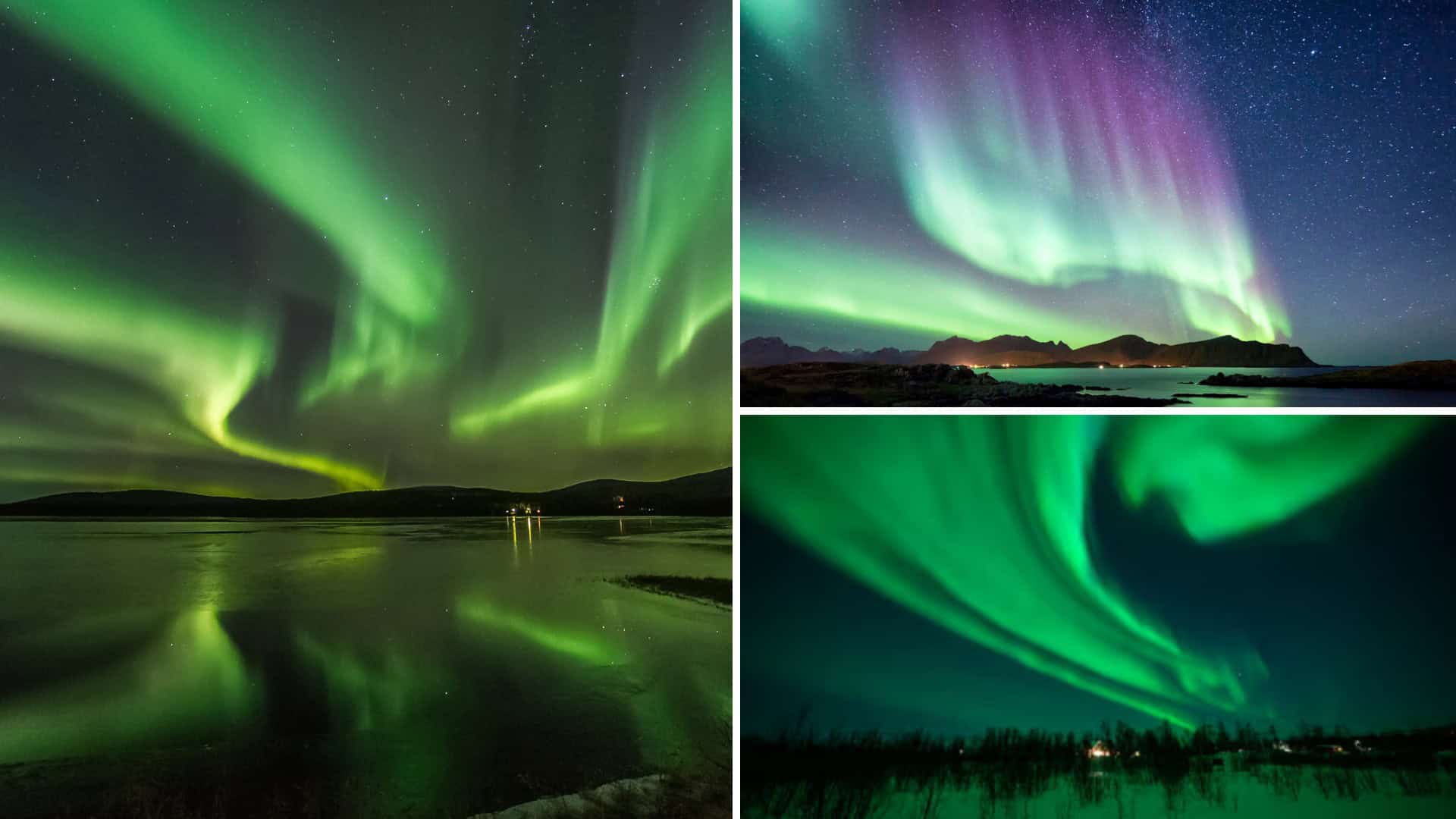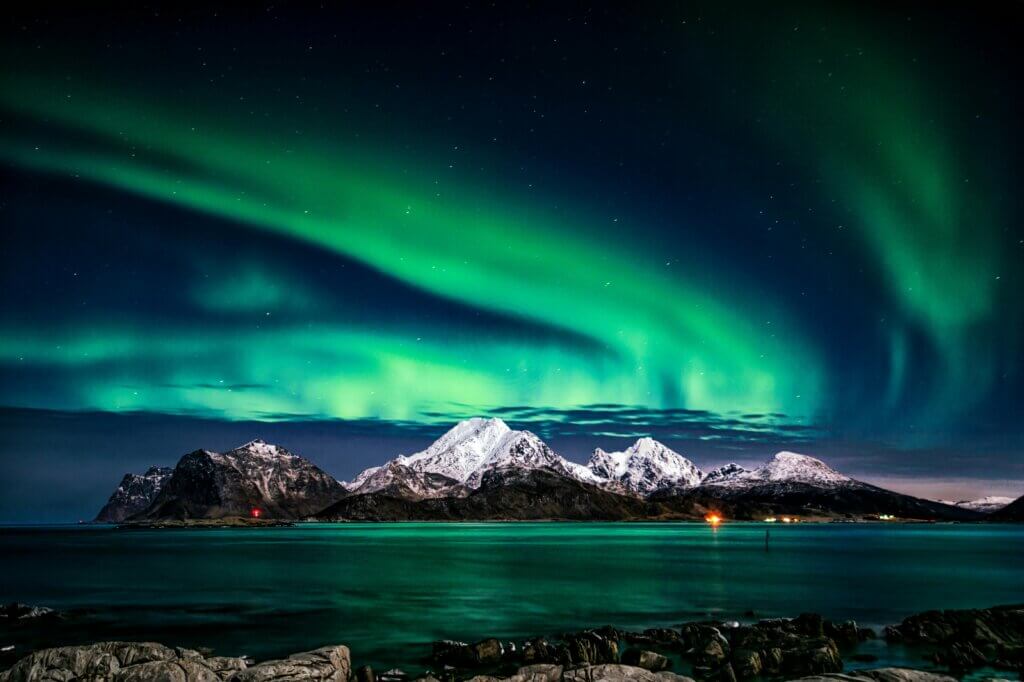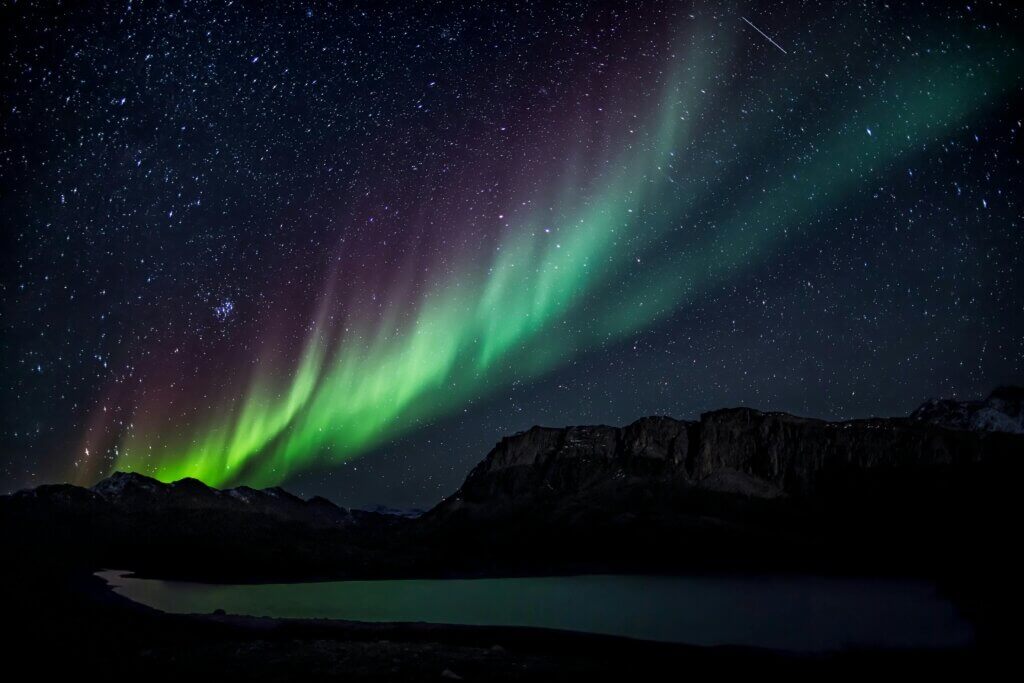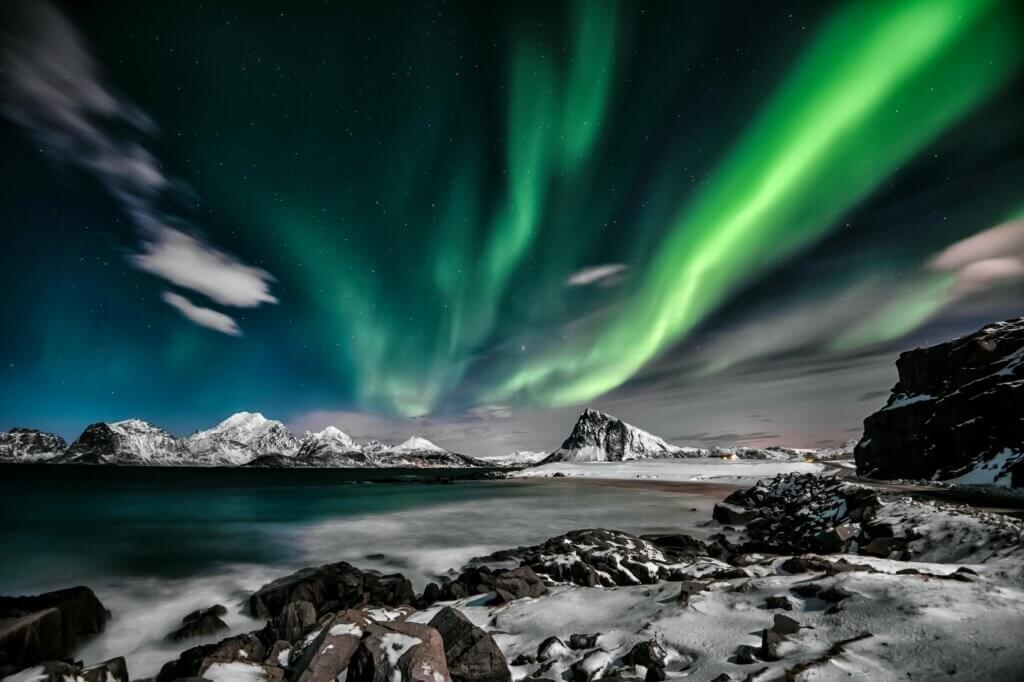No products in the cart.

The Aurora Borealis, or Northern Lights, has long captivated observers with its ethereal displays. In Irish and Celtic culture, these luminous phenomena have been woven into folklore and mythology, often interpreted as omens or manifestations of otherworldly forces. Historical records indicate that the aurora was sometimes viewed as a harbinger of significant events, reflecting the deep connection between the natural world and cultural beliefs in Ireland.

Yes, it is possible to witness the Aurora Borealis, or Northern Lights, from Ireland. While Ireland is situated at a lower latitude compared to regions like Norway or Iceland, which are renowned for frequent auroral displays, there have been documented instances of the Northern Lights gracing Irish skies. These occurrences are relatively rare and typically coincide with periods of heightened solar activity, which intensify the auroral oval, allowing the lights to extend to more southern latitudes.
The Aurora Borealis is a natural light display resulting from interactions between charged particles emitted by the sun and gases in Earth’s atmosphere. When solar wind particles collide with atmospheric gases, they excite these gases, causing them to emit light. The specific colors observed in the aurora depend on the type of gas involved:
These interactions predominantly occur near Earth’s magnetic poles, where the magnetic field lines converge, guiding the charged particles into the atmosphere and creating the mesmerizing displays known as the Northern Lights.

The likelihood of observing the Northern Lights in Ireland is influenced by several factors, including solar activity, time of year, and local weather conditions.
The optimal period to witness the Northern Lights in Northern Ireland spans from October to April. During these months, the nights are longer and darker, providing better conditions for aurora sightings. Notably, the equinoxes in September and March are associated with increased geomagnetic activity, which can enhance the chances of auroral displays. Therefore, months like October, November, and April are particularly favorable for Northern Lights enthusiasts in Northern Ireland.
The Northern Lights are typically most visible during the late evening to early morning hours, specifically between 10 PM and 2 AM. This timeframe aligns with the darkest part of the night, reducing light pollution and allowing the aurora’s glow to be more discernible. However, it’s essential to note that auroral activity is influenced by solar wind patterns, which can vary, making precise predictions challenging.
The duration of an auroral display can vary significantly. Some events may last only a few minutes, while others can persist for several hours. The variability depends on factors such as the intensity of solar activity and prevailing atmospheric conditions. It’s also common for the aurora to ebb and flow in intensity during a single night, leading to intermittent periods of visibility.

Observing the Northern Lights in Ireland is influenced by several key factors:
1. Solar Activity
The Northern Lights, or Aurora Borealis, are directly linked to solar activity. When the sun emits charged particles during events like solar flares or coronal mass ejections, these particles interact with Earth’s magnetic field, leading to auroral displays. Periods of increased solar activity, such as during the solar maximum of the sun’s approximately 11-year cycle, enhance the likelihood of auroras. For instance, in 2024, heightened solar activity led to more frequent and intense auroral displays, even at lower latitudes like Ireland.
2. Time of Year
The best times to witness the Northern Lights in Ireland are during the months with longer nights and darker skies, typically from September to March. The equinox periods in September and March are particularly favorable due to increased geomagnetic activity. During these times, the Earth’s orientation relative to the sun enhances the interaction between solar particles and the magnetic field, increasing the chances of auroral displays.
3. Local Weather Conditions
Clear, dark skies are essential for viewing the Northern Lights. Cloud cover can obstruct the view, making it crucial to monitor local weather forecasts. Regions with minimal light pollution and unobstructed views of the northern horizon offer the best opportunities. For example, parts of the west and north coast of Ireland, such as County Donegal, provide favorable conditions due to their low light pollution and clear horizons.
By considering these factors—solar activity, time of year, and local weather conditions—enthusiasts can enhance their chances of experiencing the mesmerizing Northern Lights in Ireland.

To maximize the chances of witnessing the Northern Lights in Ireland, it’s crucial to select locations with minimal light pollution and unobstructed views of the northern horizon.
Several locations in Ireland are renowned for offering favorable conditions to observe the Northern Lights:
While Dublin’s southern latitude and significant urban light pollution make aurora sightings rare, it is not entirely impossible. There have been occasional reports of the Northern Lights being visible from Dublin, particularly during intense geomagnetic storms. However, such events are infrequent, and residents are more likely to witness the aurora by traveling to areas with darker skies and higher latitudes.

The term “Aurora Borealis” was coined by the Italian astronomer Galileo Galilei in 1619. He combined “Aurora,” the Roman goddess of dawn, with “Boreas,” the Greek god of the north wind, to describe the luminous phenomenon observed in the northern skies. This nomenclature reflects the appearance of the lights as a “northern dawn.” In the Southern Hemisphere, similar displays are known as the “Aurora Australis,” or Southern Lights.
In summary, while Ireland is not a prime location for frequent auroral displays, under the right conditions, the Northern Lights can be observed. By understanding the factors that influence auroral activity and selecting optimal viewing locations and times, enthusiasts can enhance their chances of witnessing this breathtaking natural spectacle.
















